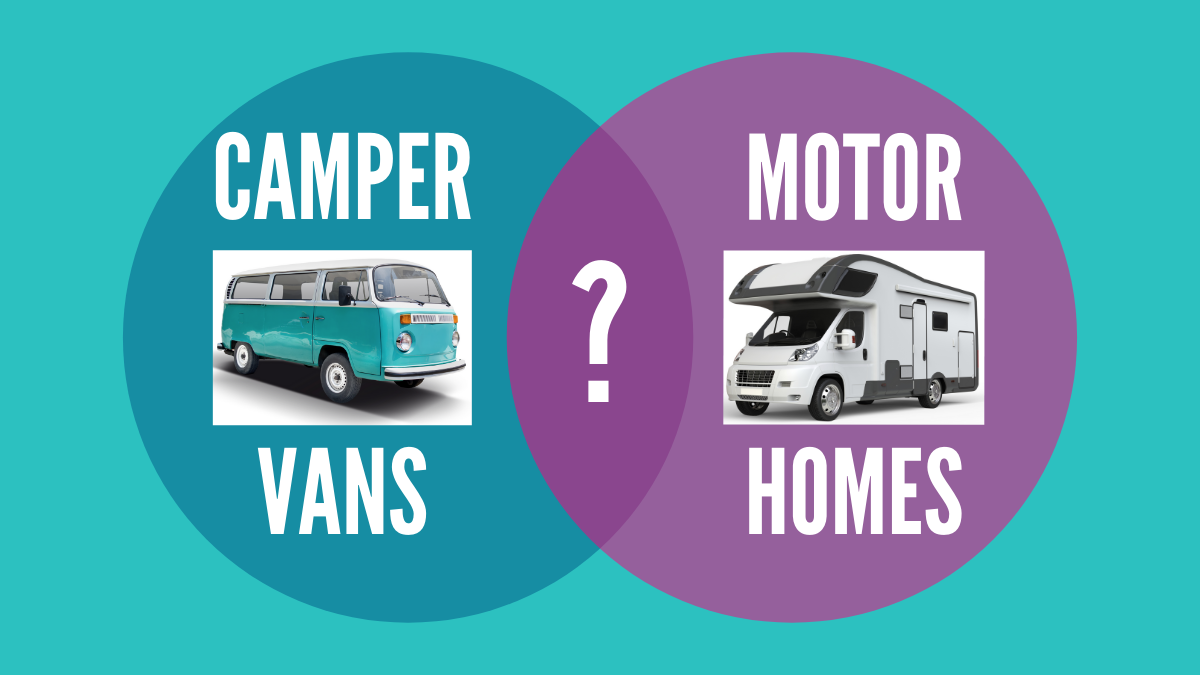What exactly is the difference between a campervan and a motorhome? Seems obvious, or is it? We take a detailed look to try and answer the question once and for all.
The terms campervan and motorhome seem to be often used interchangeably. They are after all both leisure vehicles that provide transport and accommodation in one.
We’ve been to motorhome dealers and hire firms that refer to all of their vehicles as “motorhomes”, but go on to talk about the features of their amazing “campers” or “campervans”.
Let’s get down to it and have a red-hot go at nailing down the issue of how to tell the difference between a campervan and a motorhome.
Definitions of campervan and motorhome
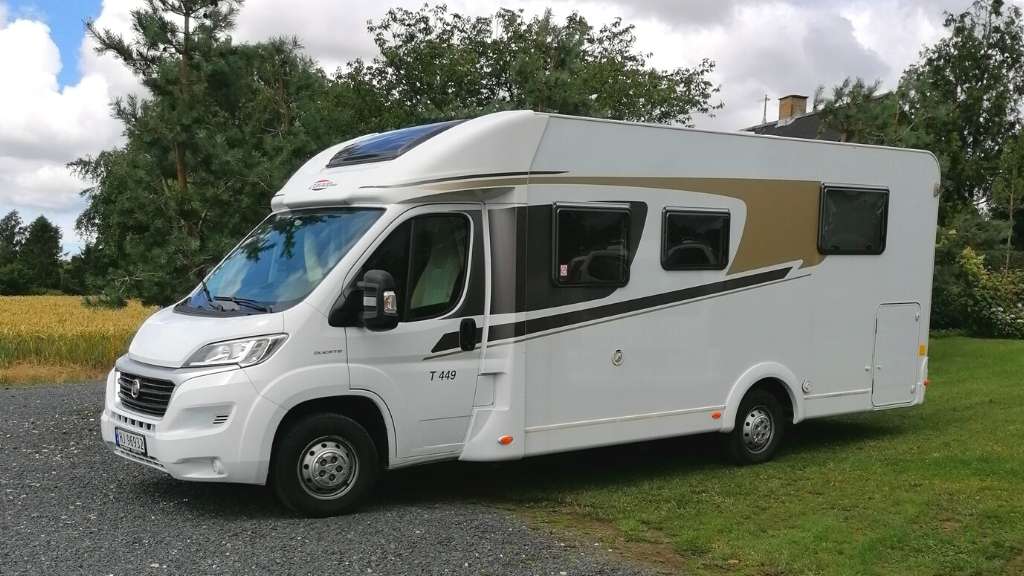
Let’s start with some definitions.
Before we examine their differences in more detail, we’ll set out a formal description of the terms “campervan” and “motorhome” as they are generally used in the UK, Australia, New Zealand, and various other countries.
What is a Campervan?
A campervan is a van that has been fitted out to be a camping vehicle. Campervans are built using a panel van body as a base, not only the chassis. They typically contain one or more fold-out or pop-up beds, gear storage areas, and often have basic kitchen facilities like a gas stove, sink, and fridge.
There is usually no separation between the driving cab and the living area, and most campervans do not have a built-in shower or toilet.
What is a Motorhome?
A motorhome is designed to be a fully self-contained travelling and living vehicle. They are usually manufactured using a truck or bus chassis as a base with a custom-made body attached (coach-built). Some motorhomes keep the cab intact, and others do not.
Motorhomes have kitchen and bathroom facilities, and some have fixed beds. A motorhome is usually longer than a campervan and is more likely to contain home comforts such as airconditioning and television.
Motorhome and Campervan differences
Now we’ve defined them, let’s compare the features that are typical of each type of leisure vehicle.
| Feature | Campervan | Motorhome |
|---|---|---|
| Base vehicle | Van or MPV car | Van, truck, or bus |
| Body type | Panel van or car body | Custom-made body |
| Length | Up to 6 metres | 5 to 12 metres |
| Separate cab | No | Sometimes |
| Side door | Usually sliding | Usually hinged |
| Berths | 2-4 | 2-8 |
| Pop-top roof | Yes, but not always | No |
| Folding bed | Usually | Sometimes |
| Fixed bed | Sometimes | Often |
| Storage cupboards | Yes | Yes |
| Cooking facilities | Usually | Yes |
| Gas tank | Usually | Yes |
| Fridge | Often | Yes |
| Sink | Often | Yes |
| Water tank | Often | Yes |
| Waste-water tank | Often | Yes |
| Storage cupboards | Yes | Yes |
| Shower/toilet | Not usually | Yes |
| Electric hookup | Often | Yes |
| Airconditioning | No | Often |
| TV/DVD | Sometimes | Often |
Using this table will help you decide the campervan versus motorhome question for most vehicles. But, there is some overlap so it’s a question of looking at the whole picture.
Are we there yet?
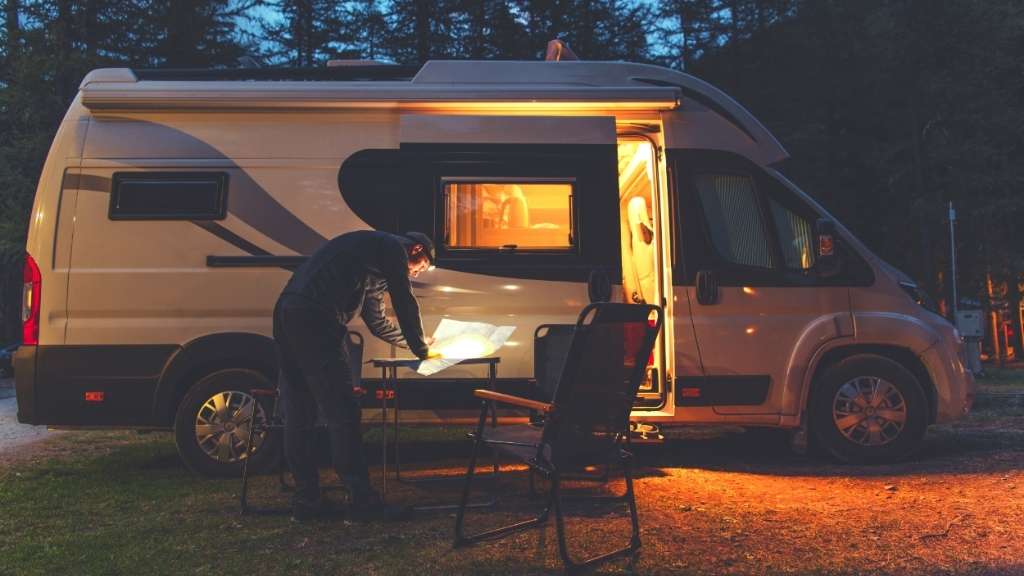
No, we’re not quite there yet.
Like most rules, there are exceptions. Our definition isn’t perfect by any means, so let’s take a look at what some of those exceptions are.
Low-profile motorhomes
In recent years a very popular type of motorhome in the UK and Europe is what is known as a “low-profile coach-built motorhome”.
These have a slimline roof and sleek proportions which resemble a long-wheelbase campervan.
In our humble opinion, these vehicles have a foot in both camps. They have a custom-built body but the proportions of a larger campervan.
Long-wheelbase panel van conversions
Similarly, some campers are built using a long-wheelbase panel van body, but with motorhome comforts such as a shower/toilet room and fixed bed.
They could be a campervan but also a motorhome. Maybe both?
Other examples
A few more examples of hard-to-categorise campervans/motorhomes:
- A short wheelbase van with a washroom. Does that make it a motorhome?
- A bus kitted out with beds, kitchen, bathroom, storage, and so on, uses the original bus body. Is it therefore considered a motorhome?
- A long wheelbase, high roof panel van with the kitchen installed laterally, blocking access to the driving cab. Campervan or motorhome?
- What about an old ambulance carefully converted to a very comfortable camping vehicle?
- A four-wheel drive with a kitchen in the back and a pop-up roof bed on top. Is that a campervan, motorhome, or just a car?
- A fifth-wheeler motorhome that detaches from the cab. Is it even a motorhome?
Exactly how each of these vehicles fits the category of motorhome or campervan is debatable.
What are Class A, B, and C motorhomes?
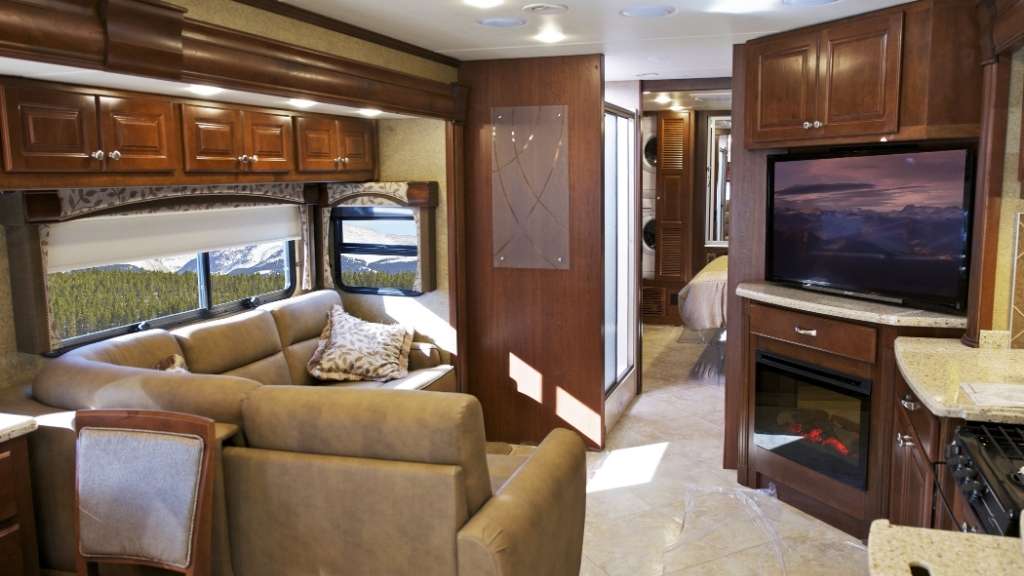
The description and differences we’ve set out above relate to the types of motorhomes and campervans commonly found in the UK, Australia, New Zealand, and Europe (albeit by local names).
The motorhome classes A, B, and C are derived from the North American RV market.
RV stands for Recreational Vehicle, and is a generic term that includes motorhomes of all types and sizes. It is most associated with the very large bus-size vehicles which often have slide-out sections to widen the interior space when camped.
In the US and Canada the motorhome world is quite different, with very large and often luxurious motorhomes up to 45 feet long a much more common sight.
The best known of these is the Winnebago brand, although they also make a range of smaller vans too and started out making campervans.
The US motorhome classification system
- Class A: The largest and longest RVs, with the most comforts and highest price.
- Class B: What we would refer to as a campervan in the UK or a camper in the US/Canada.
- Class B+: A larger version of Class B, often with a shower/toilet room.
- Class C: Motorhomes larger than classes B/B+ with a coach-built body and a semi-integrated cab.
These class descriptions are sometimes referred to by UK dealers, but inconsistently.
The exception to this is Class A or A-Class motorhomes, which is the term used for the large and long end of the market.
Does the campervan/motorhome difference matter?
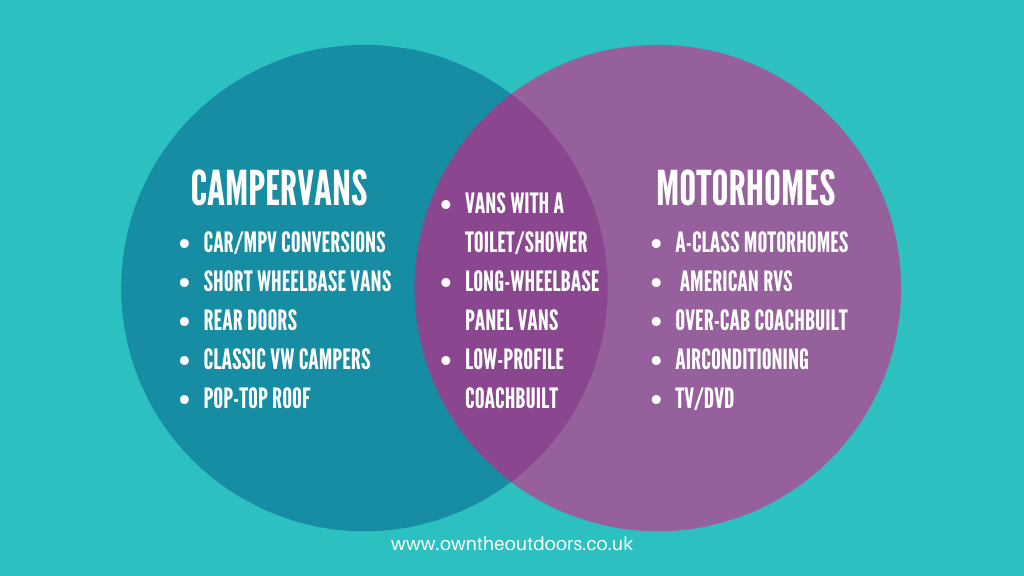
No, not really.
In this article, we are just talking about terminology. The terms are frequently used interchangeably, or a campervans are simply seen as small motorhomes.
Some motorhome owners would be horrified to have their vehicle called a campervan, and similarly, some campervanners see themselves as driving something very distinctive from (and way cooler than) motorhomes.
Exactly what your holiday-home-on-wheels is referred to doesn’t make any practical difference, however, there are definite advantages and disadvantages of owning a campervan over a motorhome and vice versa. We discuss this in detail in our article Pros and Cons of Campervans and Motorhomes: Which Should You Buy?
Where the difference between motorhomes and campervans may be thought to matter are for DVLA road tax, driving licence, and insurance purposes.
(But they don’t really).
DVLA – road tax
Road tax, or its proper name Vehicle Excise Duty (VED), is charged to the vehicle owner.
The terms motorhome and campervan are not used by the DVLA. Instead, these vehicles are called “motor caravans”.
To be a motor caravan a vehicle must meet certain criteria which include sleeping accommodation, sleeping, cooking, storage, and seating facilities. As such, some more basic campervans don’t qualify.
The VED rates are set according to weight and engine size, and when the vehicle was first registered. It doesn’t matter whether the vehicle is considered to be a campervan or a motorhome.
Driving licences
Again, the motorhome/campervan distinction is not directly related to driving licences.
The type of driving license you need to drive a motorhome or campervan depends on the vehicle’s Maximum Authorised Mass (MAM).
You can drive a campervan or motorhome up to 3,500kg on a standard Category B licence. Larger motorhomes will require a Category C1 (3.5-7.5 tonnes) or Category C (over 7.5 tonnes) licence.
Insurance
Insurance on campervans and motorhomes is generally cheaper than standard car and commercial van insurance. If you convert a van into a campervan you need to register as a motor caravan to qualify for motorhome insurance.
Ferry and train transport
Fares are generally cheaper for personal use vehicles such as campervans and motorhomes than for commercial vehicles. As with insurance, it is important to have a change in status registered with the DVLA.
